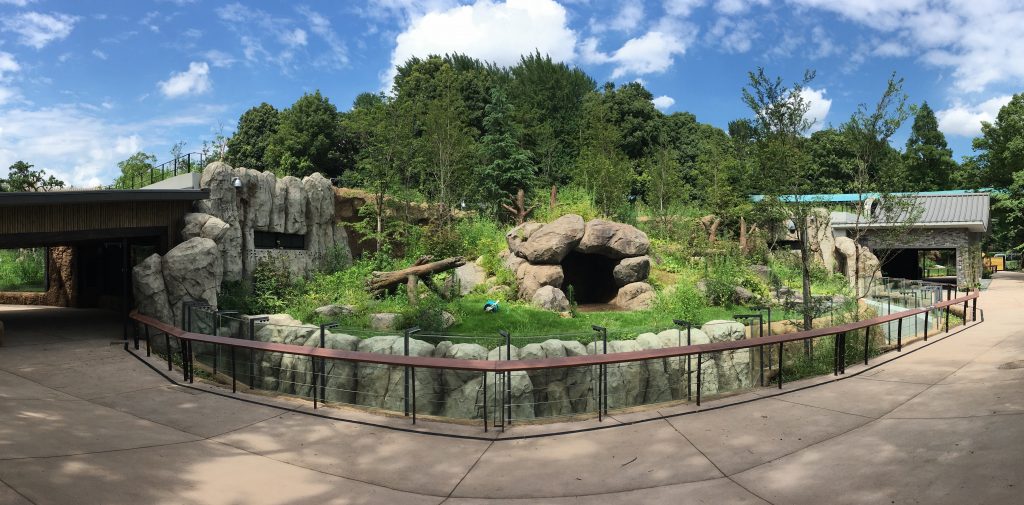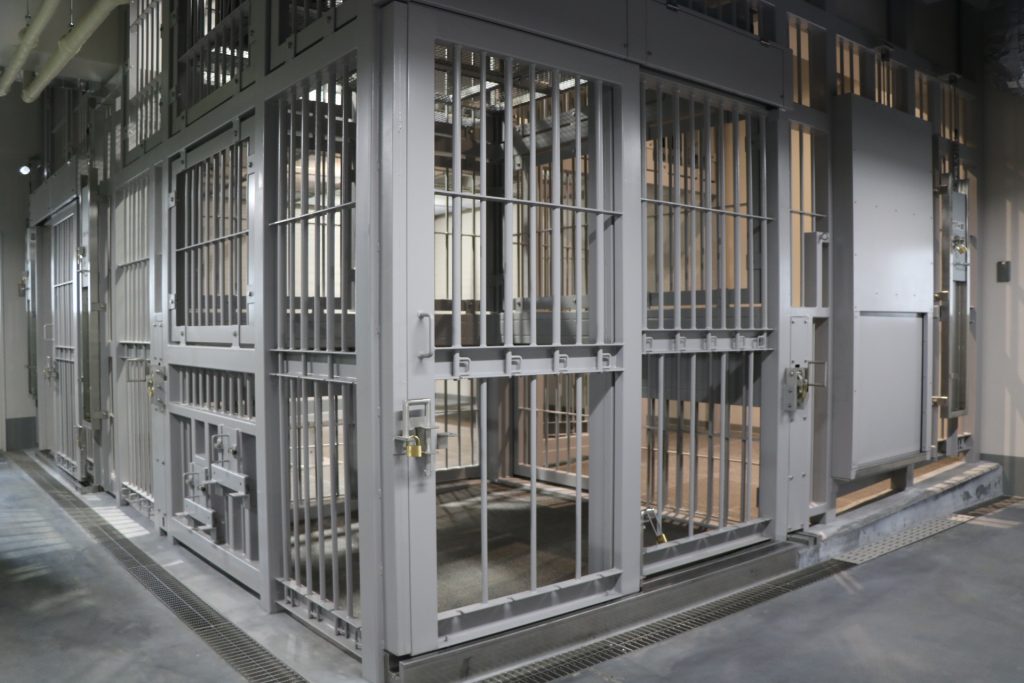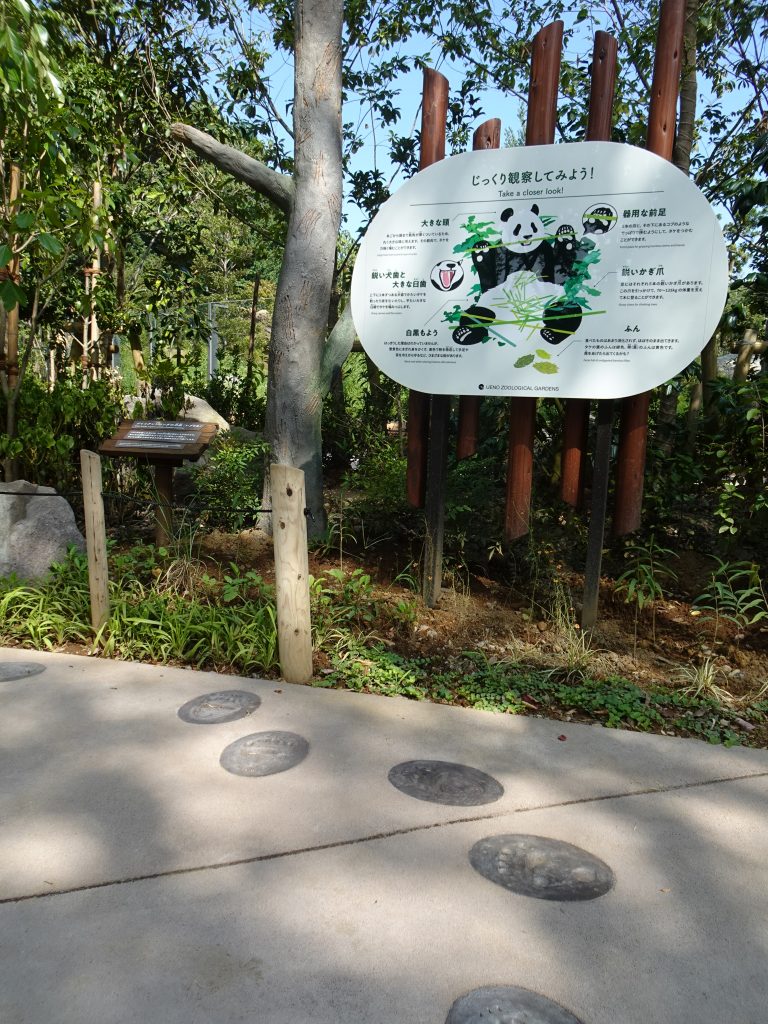
July 7, 2021
Ueno Zoological Gardens: The Opening of the New Breeding and Exhibition Facility, “Panda Forest”
Hitoshi Suzuki
Curator, East Garden, Ueno Zoological Gardens
Kyoko Torikai
Curator, Education and Public Relations, Ueno Zoological Gardens
Giant Pandas at the Ueno Zoo
In 1972, the government of the People’s Republic of China presented two giant pandas, “Kang Kang” (male) and “Lan Lan” (female), to commemorate the normalization of diplomatic relations between Japan and China and launched to be Japan’s first giant pandas to exhibit at Ueno Zoo. Although breeding between these two pandas did not succeed, the next two pandas that joined the zoo, “Fei Fei” and “Huan Huan” (female), gave birth to “Tong Tong” (female) and “Yeu Yeu” (male) in 1986 and 1988, triggering panda fever throughout Japan. After that, the zoo was not lucky enough to have any more cubs, and for three years from 2009, there was no giant panda exhibit at the zoo. In 2011, however, the zoo’s current pandas “Ri Ri” (male) and “Shin Shin” (female) arrived and produced a long-awaited female baby cub named “Xiang Xiang” (female) in 2017, creating a new wave of panda fever.
Creating the new giant panda breeding and exhibition facility (referred to as “the new facility”)
The two pandas were different from the other pandas that have been kept here at Ueno Zoo. The current two pandas became the first ones to achieve the purpose of “the Agreement on Cooperation in the Implementation of Giant Panda Protection Research” (called “the Agreement” hereafter) signed between the Tokyo Metropolitan Government and China Wildlife Conservation Association. The Tokyo Metropolitan Government was facing the need to promote the protection of giant pandas, develop wildlife conservation projects, and promote people’s understanding of conserving the natural environment and protecting wildlife. To promote breeding research in particular, which lies at the heart of the Agreement, we began to consider building a new facility to replace the panda house, which was old enough and had an outdated structure incompatible with the latest breeding and management methods.
Our breeding staff participated in the facility’s construction by the Tokyo Metropolitan Government’s Bureau of Construction at every stage, from design to construction. It held a series of detailed discussions to create an environment where giant pandas could be raised safely and healthily. Construction has started in January 2019 and finished at the end of June 2020.

Outline of the new facility
After the construction was completed, necessary fixtures were installed, equipment was checked for operation, and the entire building was disinfected. The two pandas were relocated in the early morning of August 24, 2020 using an air-conditioned truck. After adjusting to the new environment, they were exhibited to the public starting September 8.
Located in the West Garden, the new facility features an area of approximately 6,800 m². It contains a giant panda house, a lesser panda house, a pheasant house, viewing passages, plants, and toilets (two locations). The area of the giant panda house alone is about 1.7 times larger than the previous one. The name of the new facility became “Panda no Mori (Panda Forest).” Before explaining this name, we would like you to know that the sound of “mori” has two meanings in Japanese; “forest” and “conservation.” We hoped this new facility to be a “forest –one meaning of mori-” where make the pandas spend their time lively and to be the place of “conservation –another meaning of mori-.”
The primary feature of Panda Forest is the landscape created to resemble the natural environment of China’s Sichuan Province, where the giant panda inhabits. With the same intention, lesser pandas and pheasants, which live in China’s mountainous regions, are exhibited nearby. The habitat consists mainly of bamboos and coniferous trees planted in the outside enclosure. Borrowing the scenery of the trees in Ueno Park, the view may evoke the visitors to imagine the deep forest of China.

Second, a breeding environment and facilities were provided to keep the giant pandas healthy and lively. In the outside enclosure, an exciting space was created by placing large rocks and fake trees on the steeply sloping ground so that the pandas could move in three dimensions. In the inside enclosure, exhibition area and bedroom are supplied as well. Additional areas can be created by opening the doors between the rooms.
Third, we have strengthened our functions for breeding and research. To ensure that pandas can safely give birth and raise their cubs, we have established cages with a structure that allows staff to easily assist in the care of cubs and a nursery room exclusively for pandas. In addition, the bamboo warehouse, where the pandas’ staple food of bamboo is stockpiled, has been expanded 2.8 times to make it possible to keep more pandas, and a new laboratory has been set up to house precision testing equipment for research purposes.

Fourth, we have improved signs to communicate the appeal of the giant panda as a wild animal that a panda is not only to be “cute.” Signs indicating the basic ecology of the giant panda, its current status in the wild, the need for conservation, and the zoo’s efforts have been placed at the area’s entrance. There is also an observation guide installed in front of the exhibit to help visitors enjoy watching the live animals. Also, footprints have been embedded in the viewing passages so that visitors can follow the footprints to find artificial trees with claw marks and artificial dung, which make them feel as if they have wandered into the pandas’ forest.

Future breeding and exhibition of giant pandas
In 2020, both Ri Ri and Shin Shin turned 15 years old, giving them about five more years are left to be adequate for reproduction. The new facility “Panda Forest” is applied certainly for conservation, breeding, and research. Also, we are making every effort for the next breeding term cooperating with the China Wildlife Conservation Association and other related organizations. We hope everyone will look forward to watching the growth of the next cub following Xiang Xiang in the new facility.
(Hitoshi Suzuki and Kyoko Torikai)
Ueno Zoological Gardens
As Japan’s first zoo, it opened in 1882. It is an urban zoo located among the greenery and cultural facilities of Ueno Park. The zoo is home to approximately 3,000 animals of 350 species. The East Garden has Gorilla Woods and Tiger Forest, Elephant Forest, and Polar Bear and Sea Oceans. The West Garden hosts Panda Forest, African animals such as giraffes, shoebills, and aye-ayes, Vivarium as amphibians and reptiles house, and Children’s Zoo Step.